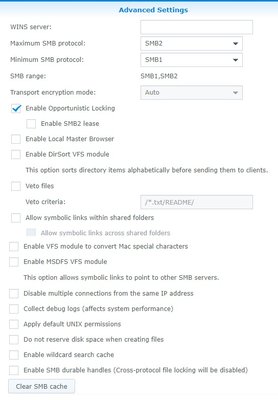I haven't tested my Synology NAS yet but I've verified accessing shares again from Windows 95 to my FreeNAS server today. Without setting smbpasswd you'll be stuck to granting guest access to any shares so make sure you use smbpasswd if you don't want to grant guest.
The following is what is needed on FreeNAS to allow it to work.
SYSTEM->TUNABLES (MIGHT NOT BE NECESSARY)
Variable: freenas.services.smb.config.server_min_protocol
Value: NT1
Type: sysctl
Comment: SMB1
SERVICES->SMB
Auxilary Parameters->
min protocol = NT1
lanman auth = Yes
client lanman auth = Yes
client plaintext auth = Yes
The above options will allow access to Freenas from 9x clients. The below smbpasswd command will allow access to shares requiring authentication. If the below smbpasswd does not work then your only option is to setup another share and allow guest access (don't enable on your regular shares) Change permissions for "Everyone" to write access on the guest share.
From FreeNAS command prompt:
smbpasswd -a username
Use the same username on guest as on the FreeNAS host
None of the above may be required if NTLMv2 is used on 95/98 with dsclient but I couldn't get it to work with FreeNAS so Lanman it is.
/EDIT
It appears that enabling NTLMV2 on 95/98 appears to work without the above settings in Services->SMB but may be inconsistent, needs more testing. Verified working by deleting the reg key, rebooting and receiving IPC error and then adding it back rebooting and logging on. Think main issue is when having one 9x machine using lanman and the other using NTLM which causes both to not work. Have all machines use one or the other not both.......
